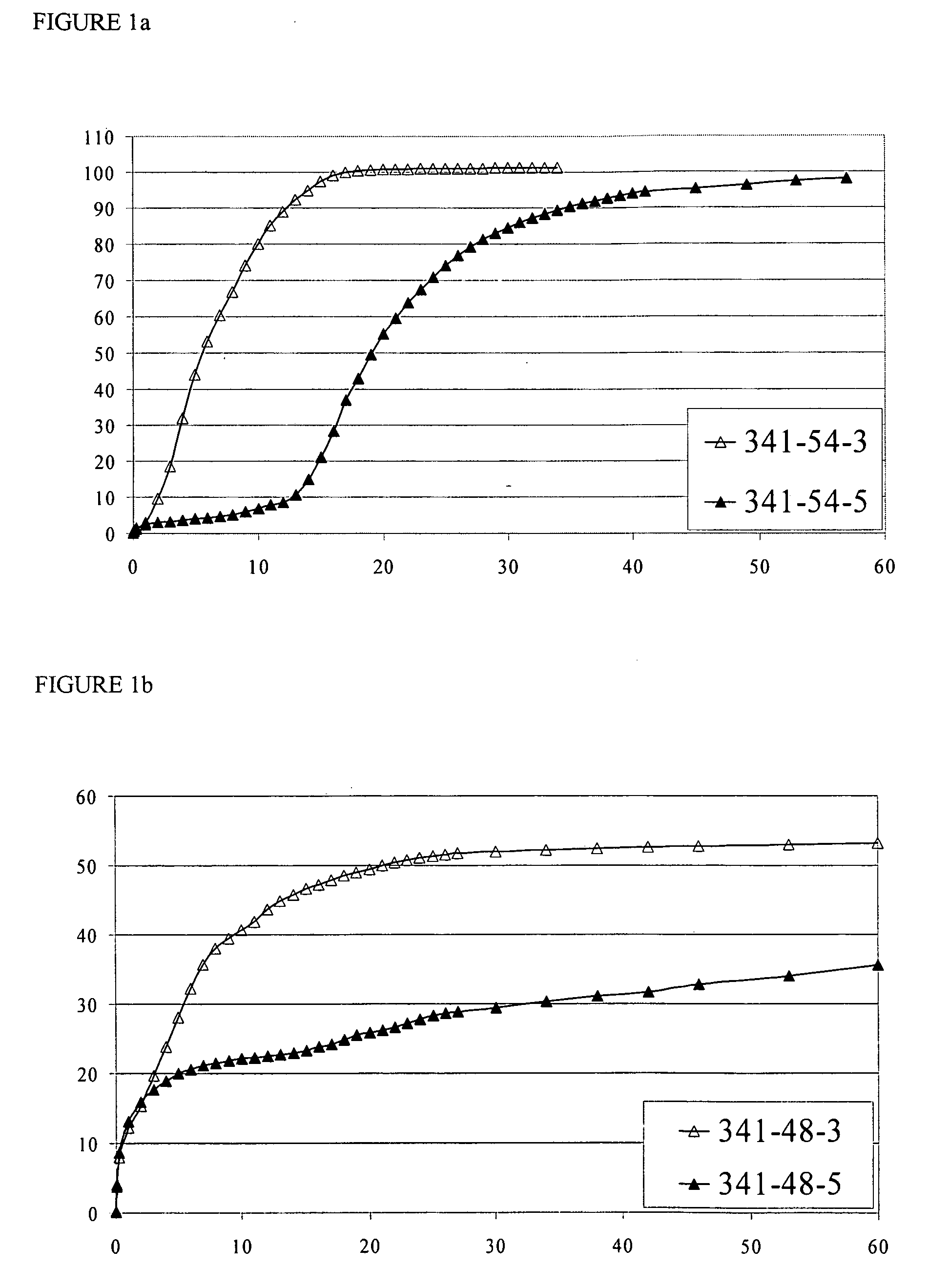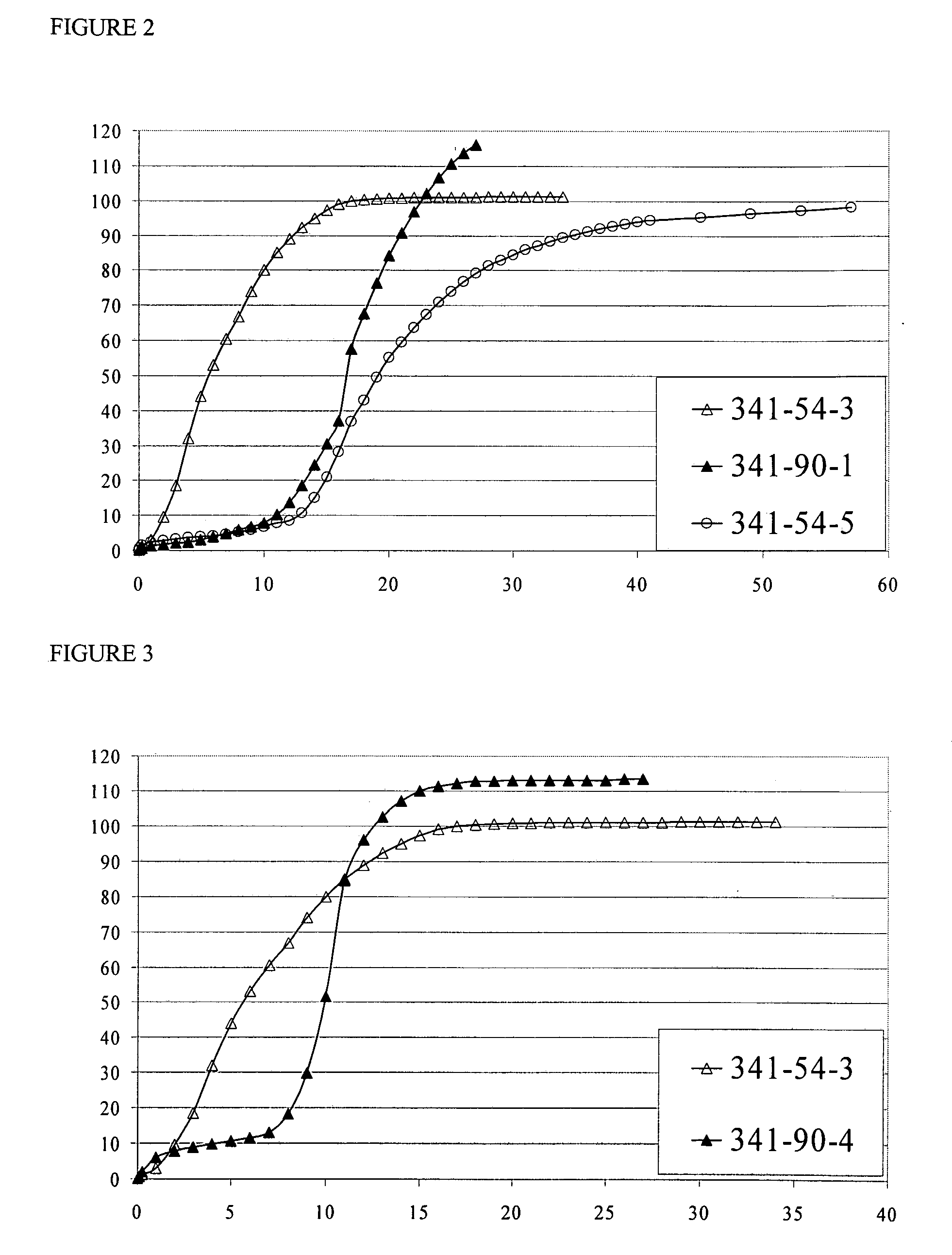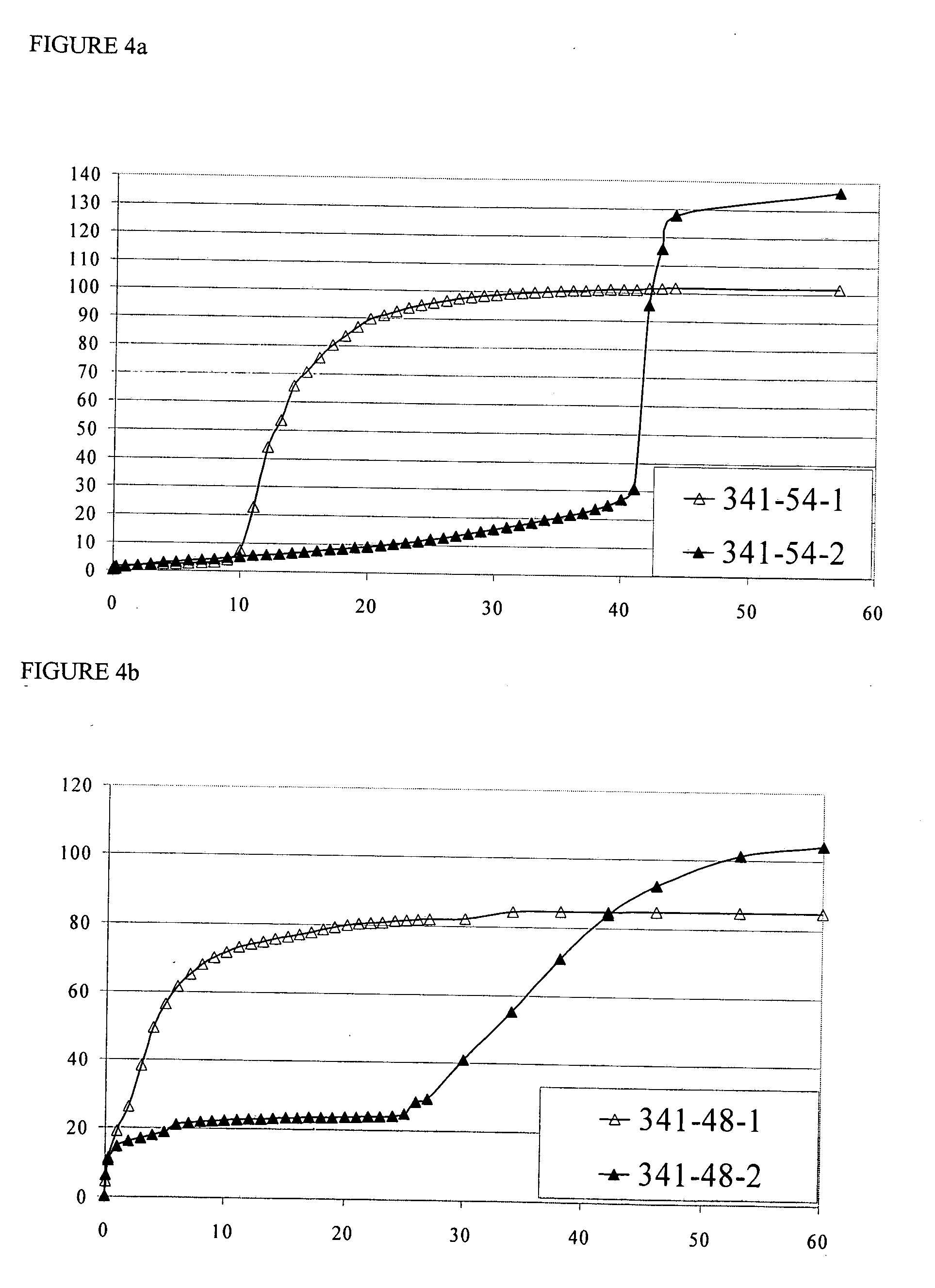Systems and methods for delivery of drugs
- Summary
- Abstract
- Description
- Claims
- Application Information
AI Technical Summary
Problems solved by technology
Method used
Image
Examples
examples
[0418]The US applications and International Patent Publications referred to above contain detailed examples of the preparation and testing of pharmaceutical formulations containing CYSC polymers. The Examples below further illustrate the invention.
Examples EC1-EC10
[0419]Examples EC1-EC10 describe the preparation of ECC polymers, and are summarized in Table EC1 below. Table EC1 identifies the starting materials and the amounts thereof in grams, and molecular weight and DSC characteristics of the various products. In the PLGA polymers used in the Examples, the molar ratio of (units derived from) GA to LA was 1:1. After the Table, there is a detailed account of the procedures used in each of Examples EC1-EC10. The heading of each detailed example includes an abbreviation indicating the polymer produced in the example, in the form “PLGA”, indicating that the polymer is an unmodified PLGA [in comparative Example EC1 (C)], or “nECC-PLGA”, where n is 1, 2, 3, 4 or 6, indicating that the po...
example ec1
Preparation of 1ECC-PLGA (ID #341-1-3)
[0420]The GA, LA and C22OH were placed in a 1000 mL vessel equipped with a mechanical stirrer and heated to 140° C. After stirring for 15 to 25 min, vacuum was applied to remove water. The reaction was continued under reduced pressure at 140° C. for at least 16 hrs. A clear pale yellow viscous liquid was removed from the vessel while it was still hot. After cooling to room temperature, 85 gram of opaque solid (341-1-3) was obtained.
Example EC1 (C)
Preparation of PLGA (ID #341-1-0)
[0421]The GA and LA were reacted following the procedure of Example EC1. A clear solid, 84 g, (341-1-0) was obtained.
example ec2
Preparation of 1 ECC-PLGA (ID #338-80)
[0422]The ECC-PLGA (ID # 341-1-3) and SUCAN (molar ratio of 1:1), and a catalytic amount of PTSA were combined with 200 mL toluene in a 250 mL round bottom flask fitted with a condenser and Dean-Stark trap. The mixture was stirred under reflux with a magnetic stir bar under nitrogen in a 135° C. oil bath overnight. The temperature was increased to 150° C. and stirring continued for 2 days, after which toluene was removed by distillation over 4.5 hours. Reaction progress was monitored by FTIR through loss of anhydride peaks at 1864 cm−1 and 1782 cm−1, loss of broad PLGA alcohol peak from 3600-3400 cm−1, and increase in broad acid OH peak from 3300-2400 cm−1. The product was purified by first dissolving in 50 mL warm DCM and adding 50 mL water. The layers were separated in a separatory funnel and the water layer was extracted 1× with 25 mL DCM. The organic layers were combined and washed 3× with 25 mL water. The DCM layer was dried over anhydrous ...
PUM
 Login to View More
Login to View More Abstract
Description
Claims
Application Information
 Login to View More
Login to View More - R&D
- Intellectual Property
- Life Sciences
- Materials
- Tech Scout
- Unparalleled Data Quality
- Higher Quality Content
- 60% Fewer Hallucinations
Browse by: Latest US Patents, China's latest patents, Technical Efficacy Thesaurus, Application Domain, Technology Topic, Popular Technical Reports.
© 2025 PatSnap. All rights reserved.Legal|Privacy policy|Modern Slavery Act Transparency Statement|Sitemap|About US| Contact US: help@patsnap.com



